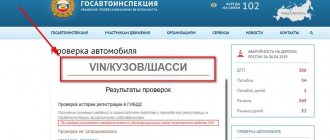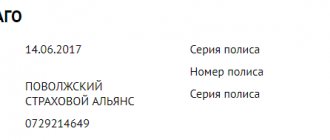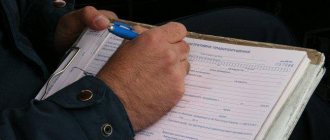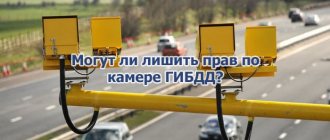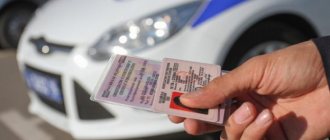If a traffic police inspector asks to be tested for alcohol, the driver can choose the place and method of analysis: on the spot, using a portable breathalyzer, as well as in a first-aid post, using stationary equipment. You can insist on checking by analyzing the composition of blood and urine. The only thing you cannot do is categorically refuse verification in any form.
There was an accident, there were injuries
Traffic police officers arriving at the scene will offer all drivers of cars involved in the accident to undergo an alcohol test right on the spot, even if they do not show signs of intoxication. This is simply the procedure when filing an accident. Drivers have a choice: agree to the procedure or refuse it:
- I agree - take several exhalations into a portable breathalyzer in the presence of others or on a video camera;
- I don’t agree - the traffic police officer records the refusal (you need to sign), and then sends you to the hospital for tests.
The analysis will show whether you have alcohol, psychotropic and other prohibited substances in your blood.
If the breathalyzer shows a positive result
If the test for the presence of alcohol in the body gives a positive result, the driver can:
- Agree with the result of the check.
- Disagree with the data. Then you need to request a referral for a medical examination. In this case, the presence or absence of intoxication will be recognized based on the results of an examination by doctors, and not according to the breathalyzer data.
It is impossible not to recognize the readings of the device and refuse the examination. In this case, the fact of driving while intoxicated will be recognized.
You were stopped by a traffic police officer
The police officer will only test the driver for alcohol if they notice signs of intoxication. These include:
- slurred speech and gait;
- inappropriate behavior;
- change in complexion;
- the smell of alcohol.
Having detected at least one of the listed signs, the traffic police officer will draw up a protocol on the driver’s removal from driving the vehicle. The car will be sent to a impound lot, and its owner will be sent for a medical examination. It can also be carried out on the spot if the driver agrees.
What requirements must a breathalyzer used by the traffic police meet?
The list of these requirements is enshrined in clause 5 of the Decree of the Government of the Russian Federation of June 26, 2008 No. 475 “On approval of the rules for examining a person who drives a vehicle for alcohol intoxication.” The device used for examination must:
- undergo verification in the manner established by the Federal Agency;
- the type of breathalyzer used must be contained in the state register of approved types of measuring instruments;
- approved for use by the Federal Service for Surveillance in Healthcare;
- provides a record of the conducted research on paper.
Features of on-site testing
A breathalyzer is a device with a display and control panel. The Ministry of Internal Affairs allows the use of certain brands and models of devices: “Alcotest 6510”, “Alcotector PRO-100”, “Jupiter”, “Lion Alcolmeter 500”. Each of them has an electrochemical sensor that determines the number of milligrams of alcohol in a liter of air that the test subject exhales. Before checking, the driver has the right to make sure that the device has a mark that guarantees its integrity, functionality and correct settings. The inspector must also present a certificate of verification of the device (original, stamped and signed).
The device displays test results immediately. It can show the presence of alcohol even if you haven't consumed it. The breathalyzer reacts to recently eaten candy, kefir, breath freshener, kvass, and some medications. The permissible alcohol content is no more than 0.16 mg per liter of air.
Before conducting the test, the traffic police officer must show the test subject that the device is turned off. It turns on in the presence of the driver. After a minute, a mouthpiece is inserted into the breathalyzer - a new one, removed from the vacuum packaging in the presence of the driver. The first air intake is carried out empty, so that the driver and inspector are convinced of the operability of the device. Then a breath test is done. After 20 minutes - another one. All results are printed in triplicate, one of which is given to the driver.
Based on the results of the inspection, the inspector draws up a protocol indicating whether the driver agrees with the results of the inspection. If he does not agree, he is sent for a medical examination.
Traffic police raid on alcohol. How not to be left without rights?
Testing for alcohol is a phenomenon that all drivers in our country, even the most inveterate teetotalers, fear. That's understandable! Article 12.8 of the Code of Administrative Offenses is one of the most stringent in the legislation and provides for deprivation of rights for a period of 1.5-2 years along with a fine of 30,000 rubles, and in case of repeated violation - deprivation of a driver’s license for three years and a fine of 50,000 rubles. Few people want to suffer such a punishment, which is what dishonest traffic police inspectors often take advantage of.
With the onset of warm weather, the traffic police traditionally activates preventive “Drunk Driver” raids. Since motorists do not always know how to behave correctly in this situation, we decided to talk about some of the nuances of such events.
Raid? Is it any different from a regular alcohol test?
Yes and no. Let's start with the most obvious: in order to check the driver for intoxication (alcohol or drugs), the traffic police inspector does not need any raids at all. It is enough to suspect the driver of using alcohol or illegal substances. Formally, for this, he must identify signs of intoxication, which include the smell of alcohol on the breath, unsteady posture, speech impairment, a sharp change in the color of the skin of the face, as well as behavior that is inappropriate for the situation. If the inspector notices any of the above, he has the legal right to conduct an examination for intoxication (that is, test the driver on a certified breathalyzer), and in case of a positive result or doubts, send him for a medical examination. (By the way, do not confuse the concepts of “examination” and “medical examination”, but we will talk about this later!). These rules apply to any tests for intoxication.
But then the nuances begin. Firstly, sometimes the traffic police conducts so-called “full checks”, during which inspectors stop the entire flow of cars, asking every driver to “take a breath”, and not just those who cause them suspicion. If the result is negative, the driver is immediately released; if the result is positive, the driver is sent for a medical examination. Secondly, during a routine check, a driver’s medical examination is usually carried out in special institutions, most often in hospitals. But during “raids” it happens that it is organized right on the spot - in the so-called mobile medical examination point (MPMO). It seems that there is no fundamental difference in where to be tested, but in fact these nuances are very important.
So, what can you encounter during a raid?
The traffic cop offers to “breathe in his face” (“breathe into his cap,” exhale into his palm, etc.). What should I do?
Sometimes a conversation with an inspector begins with such a strange, at first glance, proposal. The thing is that the procedure for testing for alcohol is in fact clearly regulated. But the behavior of the traffic police inspector is not always the case. For example, third-party requests are not prohibited by anyone. That is, if a traffic cop invites you to “breathe into your cap,” formally he is not violating anything. In the same way, a traffic police inspector may invite you, say, to talk about the weather or discuss the characteristics of a car.
“This has nothing to do with the law, this is hazing, but no one forbids an inspector from communicating with a road user on abstract topics,” Pyotr Shkumatov, coordinator of the “Blue Buckets” movement, explained to a Droma correspondent. “Here you can never prove that the inspector “sniffed” the driver because of suspicion of intoxication, and not because he liked the smell of his toothpaste,” the activist added.
How to respond to such proposals? In general, it's up to you. According to the law, the driver is really not obliged to open his mouth and somehow exhale towards the inspector or somewhere else. So you can refuse, citing, for example, the difficult epidemiological situation. Although, on the other hand, if you are not afraid of further “divorces” and know for sure that you did not use anything prohibited, you can breathe - such an action still has no legal consequences.
They offer me to “breathe into a tube”!
But this is already a completely legal and regulated requirement! Regardless of whether you were stopped during a raid or not, the inspector must have a reason to test you for alcohol. Therefore, first of all, ask him to show his service ID in expanded form (he is obliged to do this in accordance with clause 2.4 of the Traffic Regulations and clause 20 of Order No. 185 of the Ministry of Internal Affairs of the Russian Federation), copy or photograph these IDs, and then ask him to name the signs based on which the inspector decided that you are drunk. Do this as politely as possible so as not to provoke further pressure. Most likely, the traffic cop will name the necessary signs, but you will immediately make it clear that you insist on observing all legal procedures.
If you agree to undergo an on-site inspection, do not rush to do so. First, request that a protocol on suspension from driving a vehicle be drawn up. Of course, many traffic police inspectors don’t want to bother with papers, look for witnesses or film, so psychological pressure can come into play. Don't give in, the law is on your side. Although the Ministry of Internal Affairs has repeatedly proposed changing this procedure, fortunately for drivers, nothing has changed yet.
“Before any alcohol test, it is mandatory to draw up a protocol on suspension from driving. This protocol is the very first procedural document that the inspector is required to draw up. All proposals to “just breathe into the device” have no legal basis, and an examination for alcohol intoxication can only be carried out after drawing up a protocol on removal from driving in the presence of witnesses or under video recording,” a lawyer, lawyer for the Public Movement of Motorists, explained to Droma’s correspondent “Freedom of choice” Sergei Radko.
In addition, the driver must be checked only with the help of a special certified device that has been verified and has a serial number. Therefore, if the inspector nevertheless drew up a protocol on the driver’s removal from driving the vehicle, ask him for a copy of the certificate for the device and compare the data. It is possible that the traffic police crew may simply not have a certified device or documents for it. And of course, no “Chinese breathalyzers”!
“The inspector is required to use a special device, which not everyone has. This device must issue a paper “check” with the results of the examination, which indicates other important data: time, name of the inspector and driver, etc. No special raids, inspections or raids do not relieve the inspector of the obligation to draw up all procedural documents and not commit violations of the law regulating the examination process,” clarifies lawyer Sergei Radko.
Everything is in place, but you still don’t agree to “breathe into a tube”? Then let's remember that most important moment. Testing for intoxication by a traffic police inspector on the spot is called an “examination”, and in a specialized medical institution it is called a “medical examination”. The driver is required to undergo both tests, but refusal to undergo the test does not entail any consequences. But if the driver refuses to undergo a medical examination, this actually means automatic deprivation of his driver’s license. Traffic police inspectors know this, so sometimes they use a trick: they offer the driver to “just sign a document of disagreement,” without specifying what exactly they will have to sign for. Don't fall for this trick! Look carefully at where exactly you put your signature, and if there are empty fields left by traffic police inspectors in the protocol, feel free to put the letter Z.
According to official traffic police statistics, in 2021, 294,047 drunk drivers were identified on Russian roads. Another 170,219 drivers refused to undergo a medical examination. This is slightly less than in 2021, when 298,188 drunk drivers and 169,012 “refusers” were identified. It is curious that not all motorists caught “drunk driving” ended up losing their driver’s license. For example, in 2021, there were 44,758 cases where the case was eventually dropped by police officers, and another 4,251 cases where the case was dropped through the courts. As a rule, this happens in the case of obvious errors in the protocol on the part of the traffic police inspector who recorded the offense.
I am offered to undergo a medical examination on the spot. In some kind of van!
You can be sent for a medical examination only if the initial check shows that you are drunk. That is, the same certified device must record the level of alcohol in exhaled air of more than 0.16 mg/l. Moreover, the measurement takes place in the presence of witnesses (or under video recording), and the inspector must, in your presence, open the new mouthpiece and put it on the breathalyzer. If after this the device shows a value exceeding 0.16 mg/l of alcohol in the exhaled air, you may be sent for a medical examination. Otherwise it will be illegal.
And now about the medical examination procedure itself. In accordance with paragraph 137.4 of the 185th order of the Ministry of Internal Affairs, a medical examination for intoxication can be carried out both in a special medical organization and in a mobile medical center (MPMO). That is, the law allows it. Another thing is that not every ambulance is such a mobile unit! There is a very specific list of requirements for PPMO that it must meet. Let's list some of them:
- Cabin height is less than 1.85 m.
- The cabin must be equipped with a rubber track 0.6 m wide and at least 3 m long.
- The PPMO must have side (for entry) and rear (hinged) doors; door openings must be equipped with steps that can withstand loads of up to 200 kg and local lighting.
- The overall illumination level of the cabin must be at least 100 lux, equipped with an additional directional lamp that provides illumination of at least 600 lux with a light spot diameter of 200 mm at the level of the PPMO personnel workplace.
- The PPMO salon must have two working seats for medical personnel, a seat for the person being examined and a work desk for drawing up reports and filling out a log.
- The PPMO salon must be equipped with a washbasin with a supply of clean water of at least 7 liters and a container for collecting waste water with a volume of at least 10 liters, a dry closet, a removable plastic (sealed) garbage container with a capacity of at least 30 liters, as well as an on-board refrigerator with a capacity of at least 10 liters for storage biological samples.
Not every bus with a nice lettering is actually a PPMO.
For example, is there a toilet, a rubber track and the required height? Each PPMO must have a registration certificate from the Ministry of Health of the Russian Federation, which can and should be required if you were brought there for a medical examination. Is he not there? Then insist on conducting a medical examination in a medical organization - that is, in a hospital, and if they do not allow you to do this, be sure to reflect the discrepancy with the PPME in the protocol.
And, perhaps, the most important thing. The entire preliminary procedure before a medical examination at the PPMO should be exactly the same as in the case of a hospital: a protocol on the removal of the driver from driving - an examination by an inspector using a certified device and only then - in case the driver refuses, does not agree with the results or tests positive for alcohol - referral to doctors. And it doesn’t matter at all that the PPMO is located a few meters from the traffic police inspector; no “protocol-free” direction to this point is unacceptable even during “raids” and raids!
Everything seems to be fine. Now what?
Now the actual medical examination is taking place. It is regulated by the Order of the Ministry of Health “On the procedure for conducting a medical examination for intoxication (alcohol, narcotic or other toxic)” dated December 18, 2015. In short, the procedure looks like this: first, the driver will take an air sample, that is, they will again be asked to “breathe into a tube.” The collection consists of two samples, with the second sample taken strictly after 15-20 minutes. Intoxication is recognized only if during both measurements the device showed a value exceeding 0.16 mg of ethyl alcohol per liter of exhaled air. We emphasize - during both measurements. If during the first test the value turns out to be less than the officially recognized “instrument error” (i.e. 0.16 mg/l), then re-measurement is not carried out. If the second measurement turns out to be negative, then the driver has every chance of getting his license back, which was confirmed back in 2021 by the Supreme Court of the Russian Federation).
In addition to air samples, doctors will also take a “biological object” to send “for chemical and toxicological studies.” Simply put, the driver’s urine will be taken for analysis, and if it is impossible to urinate, blood will be taken.
The results of a medical examination can be challenged, although this is quite difficult. If the driver believes that the doctors made a mistake, he needs to quickly go for an independent examination. Moreover, it will be better if he visits two organizations at once - two examinations have slightly more weight. Although we will make a reservation: no one will give guarantees that such actions will help and the motorist will not be deprived of his driver’s license.
How to protect yourself?
First of all, never, under any circumstances, drive drunk or if you have doubts about your sobriety (for example, in the morning “after yesterday”). A drunk driver is a criminal. But sobriety is really the best alibi.
If you haven’t been drinking, but suspect something is wrong in the actions of the traffic police inspectors, do not hesitate to record everything on your phone and demand full compliance with the entire legal procedure. “Such communication with the inspector needs to be filmed, and in the video it must be clearly stated that you do not refuse to undergo a medical examination,” Blue Buckets coordinator Pyotr Shkumatov explained to Drom. — The procedure itself also needs to be filmed, and make sure that the testing device has been verified and has a serial number. There are a large number of court decisions where the driver filmed everything that was happening on video and ultimately successfully won the case,” said the activist. At the same time, Shkumatov immediately added that psychologically the driver needs to be prepared to lose from half an hour to three hours - this is how long the entire procedure for testing for alcohol can last if all formalities are followed.
Summarize:
- Any procedure for checking a driver for intoxication should be based on the following scheme: protocol on removal from driving a vehicle - initial examination by a traffic police inspector using a certified device - medical examination.
- The traffic cop’s request to “breathe into the palm of your hand” (cap, etc.) is not a violation, but you are not obliged to comply with it.
- Refusal of an initial examination does not entail serious consequences; refusal of a medical examination automatically means deprivation of a driver’s license.
- Drivers can only be tested for alcohol using a certified device that has been verified and has a serial number.
- Conducting medical examinations at mobile points (MPMS) is permitted by law, but not every ambulance is such a point.
- At each stage of the inspection, behave with traffic police inspectors as politely as possible, film the process on video, and carefully record all violations in the protocol.
- Do traffic cops give you documents to sign? Be sure to carefully study the document you are signing. A mistake could cost you your driver's license.
Medical examination in hospital
To carry out the verification procedure, not any medical center is suitable, but an institution with a license permitting such activities. The traffic police patrol is obliged to take the driver there and wait with him for the results. The potential offender donates blood and urine. The presence of alcohol in the blood is allowed in a volume of up to 0.35 ppm; there should be no alcohol in the urine at all.
Based on the results of the research, a medical examination report is drawn up, which becomes the main document and evidence in court. It is presented in three copies - one remains in the medical institution, the second is given to the driver, the third is taken by the inspector.
If the result is negative, traffic police officers are required to deliver the citizen to his vehicle. If the result is positive, a protocol on violation of traffic rules is drawn up according to the standard scheme, and the car is taken by a tow truck to the impound lot.
